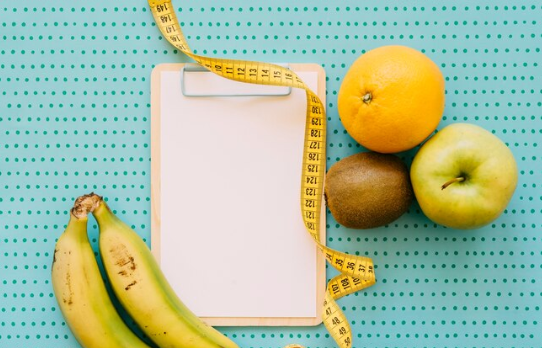Are you curious about 5 2 intermittent fasting and how it can help you lose weight while improving your overall health? This flexible and sustainable fasting method involves eating normally for five days a week and significantly reducing calorie intake for two non-consecutive days. It’s one of the easiest and most effective ways to incorporate intermittent fasting into your routine without feeling restricted. Whether you’re a beginner or someone experienced in fasting, 5 2 intermittent fasting can fit seamlessly into your lifestyle. Let’s explore how it works, its benefits, and practical tips to make it successful.
What is 5 2 Intermittent Fasting?
This means that there are fasting days
The 5 2 fasting days are the mainstay of the 5 2 fasting method. On those two non-consecutive days, you cut your caloric intake down to 500–600 calories. This colossal calorie deficit allows your body to finally stop using glucose as its primary energy source and instead burn stored fat. The fasting days are optimally spread out over the week so that your body has time to recover and adapt, ensuring that this is sustainable for the long term. For example, you could select Mondays and Thursdays to do your fasts.
How to Structure the Eating Days
For the other five days of the week, you eat normally, without strict restrictions. But it’s important not to overindulge on those days. Eating a variety of lean proteins, whole grains, vegetables, and healthy fats makes sure that your body is getting the nutrients it needs. The trick is to eat when you’re hungry, pay attention to your body’s hunger signals, and be mindful of portion sizes. This combination of fasting and eating days is what makes this method flexible and relatively simple to adhere.
5 2 Intermittent Fasting Advantages
Supports Weight Loss
The most important benefit of 5 2 intermittent fasting is weight loss. On two non-consecutive days every week, you consume less calories, creating a calorie deficit necessary for dropping fat. It also regulates hunger hormones such as ghrelin (the one that makes you feel hungry), which helps control cravings and prevents binge eating. The second type of fasting (Hunger – FASTING) is more sustainable as you eat normally on non-fasting days.
Utilizes Metabolic Health
Intermittent fasts show increased insulin sensitivity and blood sugar stabilization across weaning periods and are known to improve metabolic health. These changes make your body better at processing carbohydrates, and prevent type 2 diabetes. Fasting reduces cholesterol which can improve your heart quality and reduce the risks of heart diseases.
Improves Mental Clarity
Many people say they have better focus and mental clarity on fasting days. Fasting also stimulates the brain to utilize ketones, a more stable and efficient energy source than glucose. Moreover, it regulates energy levels by avoiding sugar spikes and drops, hence enhancing productivity and cognitive ability.”
Makes Meal Planning Straightforward
Instead of tracking your daily calories or meals, as you would with restrictive diets, 5 2 intermittent fasting frees you from the tediousness of counting calories out. For this reason, a diet consisting of five diet days and two fasting days will help you with meal planning. That simplicity makes the method easier to follow and less stressful for busy people.
Promotes Cellular Repair and Longevity
Fasting triggers autophagy — a useful process by which the body breaks down dysfunctional cells and replaces them with new ones. This cellular repair helps lower inflammation, fight oxidative stress, and boost general well-being. Studies indicate that fasting on a regular basis may also delay the aging process and extend lifespan.

## Starting 5 2 Intermittent Fasting
Deciding Which Days to Be Fasting
Choosing two non-consecutive days you feel suitable can get you started on the 5 2 intermittent fast. But, for example, you could fast on Monday after Sunday’s big dinner, and then again on Thursday after Wednesday’s meals. Choosing days with low social or work commitments makes fasting easier to fit in.
Ease into the Routine
If you’re just starting out with fasting, you may want to take it slow when you do the 5 2 method. Start with one fasting day per week, then add in the second as your body gets used to lower calorie volumes. This transition is gradual so you will feel less discomfort and create a routine that you can stick to.
Meal Prepping for Days You Plan to Fast
In our fasting days, you should have a plan. Meal prepping low-calorie, nutrient-dense meals ahead of time will keep you accountable and help you stay within the 500–600 calorie range. This prep creates less of a trigger to snack or go off your plan. Make sure to have meals that consist of lean proteins, fiber-rich vegetables and healthy fats that can help keep you full and energized.
What to Eat During Fasting Days
High-Protein Foods
Proteins are important on fasting days as they increase satiety and help to reduce muscle wasting; ensure lean proteins are on your plate (eggs, chicken, fish) and plant proteins (tofu). These foods are low-glycemicative and makes you feel full longer.
Non-Starchy Vegetables
Greens and veggies like spinach, broccoli, zucchini, and cauliflower are ideal for fasting days. They are low in calories but rich in fiber, vitamins and minerals. These vegetables are low in calorie density but high in volume.
Moderate Amounts of Healthy Fats
Add some healthy fats like avocados, nuts, seeds, or a drizzle of olive oil. These adding flavor and supplying nutrients that promote brain function and heath overall.
Hydration is Key
On fast days, it is very important to stay hydrated. In addition, drinking enough water during the day can help you avoid dehydration and suppress your appetite. Hence you can also add herbal teas and black coffee in your diet as they are also zero-calorie and can help curb your appetite.
5 2 Intermittent Fasting Mistakes to Avoid
Overeating on Eating Days
Very common is to eat too much when not fasting to make up for calorie restriction. This can cancel the advantages of fasting and cause gaining weight. Eat balanced meals and pay attention to your body’s hunger cues to avoid overeating.
Not Drinking Enough Water
Catabolization helps us hydrate but dehydration can lead to headaches, fatigue, and irritability; the latter three are common complaints on fasting days. Make sure you’re drinking water throughout the day; this helps with digestion, detoxification, and overall energy.
Not Eating Nutrient-Dense Foods
No empty calories or heavily processed foods in your feeding and fasting ammo. Instead, focus on whole, nutrient-dense foods that are good for your body and give you lasting energy.
5 2 Intermittent Fasting Versus other methods
5 2 vs 16 8 Fasting
16 8 fasting requires you to fast every day for 16 hours and eat within an 8-hour window 5 2 intermittent fasting only requires you to restrict calories 2 days a week. This makes it more flexible and easier for people who want less structure to their day.”
5 2 and OMAD (One Meal a Day)
Eating one meal a day, or OMAD, is too restrictive for many people. On the other hand, 5 2 fasting permits normal eating on the majority of days, which equipment gives it to be more practical and simpler to keep up with as time passes.
Eat Stop Eat With Anabolic Fasting Testimonials


Lifestyle Tips for Success with 5 2 Fasting
Combine Fasting with Physical Activity
Light to moderate exercise like walking, yoga, or strength training complements fasting by enhancing fat burning and boosting metabolism. Avoid intense workouts on fasting days to prevent fatigue.
Manage Stress to Avoid Overeating
Stress can trigger emotional eating, which may undermine your fasting efforts. Incorporate stress-relief techniques like meditation, journaling, or deep breathing to stay calm and focused.
Get Adequate Sleep
Quality sleep is crucial for fasting success. Poor sleep disrupts hunger-regulating hormones and increases cravings. Aim for 7–9 hours of restful sleep each night to support your fasting routine and overall health.
Conclusion: 5 2 Intermittent Fasting
5 2 intermittent fasting is a powerful yet simple approach to achieving weight loss and improving overall health. By fasting for two non-consecutive days each week and eating normally on the other five, you create a sustainable calorie deficit that promotes fat loss, metabolic health, and better mental clarity. This method is beginner-friendly, flexible, and easy to incorporate into daily life. Whether you’re new to fasting or looking for a practical way to improve your well-being, the 5 2 method is a fantastic option. Start your journey today and enjoy the transformative effects of this balanced and effective fasting style.
FAQs About 5 2 Intermittent Fasting
Is 5 2 intermittent fasting safe for everyone?
While it’s generally safe, consult a healthcare provider if you have specific medical conditions or concerns.
Can I drink coffee or tea on fasting days?
Yes, non-caloric beverages like black coffee, herbal teas, and water are allowed during fasting.
How long does it take to see results with 5 2 fasting?
Most people notice results within 2–4 weeks, depending on consistency and other lifestyle factors.
Can I work out on fasting days?
Yes, but stick to light to moderate activities like walking, yoga, or stretching to avoid fatigue.
What if I feel very hungry on fasting days?
Drink water or herbal tea, and include high-fiber, low-calorie foods like vegetables to manage hunger effectively.






